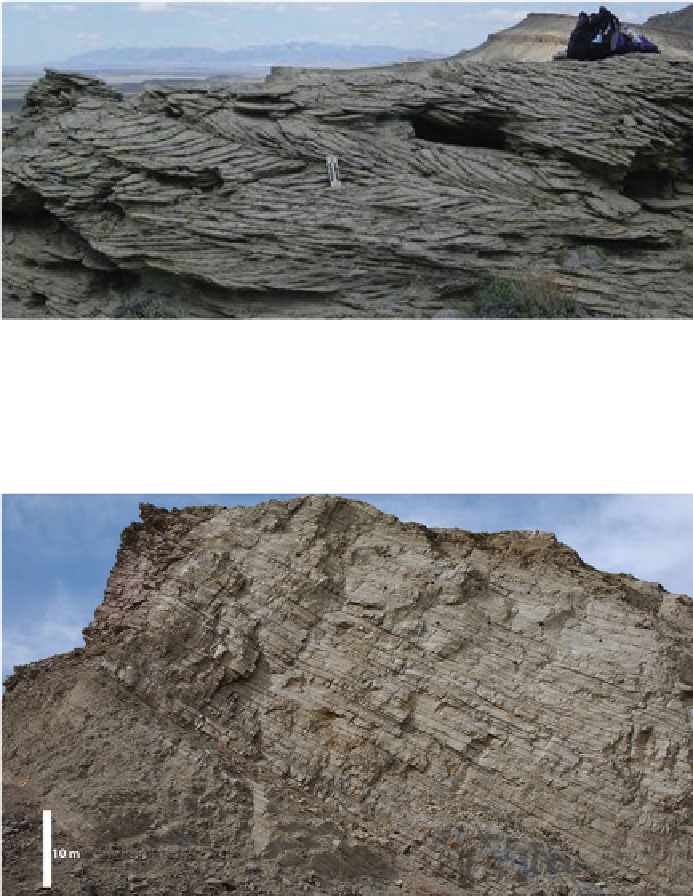Geology Reference
In-Depth Information
Fig. 17.9
Thickly stacked sets of cross strata, some with mark-
edly bi-directional paleocurrents (eastward and westward), in an
upper delta-front unit in upper O'Brien Springs Sandstone,
Haystack Mountains Formation, S. Wyoming (scale is 15 cm).
The inclined accretional arrangement of the sets of cross strata
suggest a compound dune. As suggested by Dalrymple and Choi
(
2007
), such occurrences of well-developed herring-bone cross-
strata are likely to occur mainly in compound dunes, or on a
crestal location in an elongate tidal bar
Fig. 17.10
Thick (55 m) upward-coarsening and thickening
succession of tide-dominated, delta-front deposits in O'Brien
Springs Sandstone, Haystack Mountains Formation, near Rawlins,
Wyoming. The tidal signals include some of the thin (1-2 cm)
but pervasive mudstone layers separating fi ne to medium-grained
sandstone sets, as well as sigmoidal sets in the upper third of the
succession
17.2.2 Tidal Criteria: Campanian
Backbarrier Lagoonal Deposits
(e.g. Bullimore et al.
2008
, in the Trout Creek Sandstone
of N Colorado). The lagoonal mudstones and siltstones
together with the fl ood-tidal delta and tidal inlet depo-
sits occur as coarsening-upward, landward-accreting
strata (see also Kamola and Van Wagoner
1995
) . The
landward-accreting fl ood-tidal delta deposits have a
strike extent of 50-100 m (Kamola and Van Wagoner
1995
) with a downdip length of 100s to 1,000m.
Flood-tidal deposits in Chimney Rock Sandstone of
N Utah (Plink-Bjorklund
2008
) consist of dominantly
Transgressive back-barrier successions are dominated
by lagoonal, tidal channel, fl ood-tidal delta and tidal-
inlet deposits (Fig.
17.4c
). Lagoonal deposits are
recognized as coaly mudstones and siltstones with thin
coal and sandstone beds.
Planolites
,
Paleophycus
, root
traces, and more occasionally
Arenicolites
,
Teichichnus
and
Ophiomorpha
occur in the lagoonal deposits

